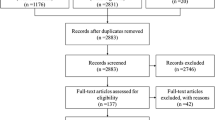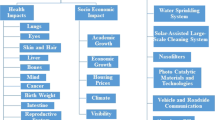Abstract
Worshipping activity is a customary practice related with many religions and cultures in various Asian countries, including India. Smoke from incense burning in religious and ritual places produces a large number of health-damaging and carcinogenic air pollutants include volatile organic compounds (VOCs) such as formaldehyde, benzene, 1,3 butadiene, styrene, etc. This study evaluates real-world VOCs emission conditions in contrast to other studies that examined emissions from specific types of incense or biomass material. Sampling was conducted at four different religious places in Raipur City, District Raipur, Chhattisgarh, India: (1) Hindu temples, (2) Muslim graveyards (holy shrines), (3) Buddhist temples, and (4) marriage ceremony. Concentrations of selected VOCs, respirable particulate matter (aerodynamic diameter, <5 μm), carbon dioxide, and carbon monoxide were sampled from the smoke plumes. Benzene has shown highest emission factor (EF) among selected volatile organic compounds in all places. All the selected religious and ritual venues have shown different pattern of VOC EFs compared to laboratory-based controlled chamber studies.

Similar content being viewed by others
References
Akagi, S. K., et al. (2011). Emission factors for open and domestic biomass burning for use in atmospheric models. Atmospheric Chemistry Physical, 11, 4039–4072.
Andreae, M. O., & Merlet, P. (2001). Emission of trace gases and aerosols from biomass burning. Global Biogeochemical Cycles, 15(4), 955–966.
Arif, A. A., & Shah, S. M. (2007). Association between personal exposure to volatile organic compounds and asthma among US adult population. International Archives of Occupational and Environmental Health, 80, 711–719.
Beck, J. P., Heutelbeck, A., & Dunkelberg, H. (2007). Volatile organic compounds in dwelling houses and stables of dairy and cattle farms in Northern Germany. Science of the Total Environment, 372, 440–454.
Busoon, S., Patrick, B., & Wonho, Y. (2003). Volatile organic compounds concentration in residential indoor and outdoor and in personal exposure in Korea. Environmental Pollution, 29, 79–85.
Cai, H., & Xie, S. D. (2009). Tempo-spatial variation of emission inventories of speciated volatile organic compounds from on-road vehicles in China. Atmospheric Chemistry Physical, 9, 6983–7002.
Chow, J. C. (1995). Critical review: measurement methods to determine compliance with ambient air quality standards for suspended particles. Journal of the Air & Waste Management Association, 45, 320–382.
DeHaan, J. D., Brien, D. J., & Large, R. (2004). Volatile organic compounds from the combustion of human and animal tissue. Science & Justice, 44(4), 223–236.
Dhammapala, R., Claiborn, C., Corkill, J., & Gullett, B. (2006). Particulate emissions from wheat and Kentucky bluegrass stubble burning in eastern Washington and northern Idaho. Atmospheric Environment, 40, 1007–1015.
Dhammapala, R., Claiborn, C., Jimenez, J., Corkill, J., Gullett, B., Simpson, C., et al. (2007). Emission factors of PAHs, methoxyphenols, levoglucosan, elemental carbon and organic carbon from simulated wheat and Kentucky bluegrass stubble burns. Atmospheric Environment, 41, 2660–2669.
Feingold, G., & Morley, B. (2003). Aerosol hygroscopic properties as measured by LIDAR and comparison with in situ measurements. Journal of Geophysical Research, 108, AAC1-1–AAC1-11.
Gokhale, S., Kohajda, T., & Schlink, U. (2008). Source apportionment of human personal exposure to volatile organic compounds in homes, offices and outdoors by chemical mass balance and genetic algorithm receptor models. Science of the Total Environment, 407, 122–138.
Goldstein, A. H., & Galbally, I. E. (2007). Known and unexplored organic constituents in the earth’s atmosphere. Environmental Science and Technology, 41(5), 1514–1521.
Guo, H., Lee, S. C., Chan, L. Y., & Li, W. M. (2004). Risk assessment of exposure to volatile organic compounds in different indoor environments. Environmental Research, 94, 57–66.
Haq, M. S., & Haq, M. N. (2006). Studies on the effect of urine on biogas production. Bangladesh Journal of Scientific and Industrial Research, 41, 23–32.
Janhall, S., Andreae, M. O., & Poschl, U. (2010). Biomass burning aerosol emissions from vegetation fires: particle number and mass emission factors and size distributions. Atmospheric Chemistry Physical, 10, 1427–1439.
Jetter, J. J., Guo, Z. S., Mcbrian, J. A., & Flynn, M. R. (2002). Characterization of emissions from burning incense. Science of the Total Environment, 295, 51–67.
Kumar, A., & Viden, I. (2007). Volatile organic compounds: sampling methods and their worldwide profile in ambient air. Environmental Monitor Assessment, 131, 301–321.
Lee, S. C., & Wang, B. (2004). Characteristics of emissions of air pollutants from burning of incense in a large environmental chamber. Atmospheric Environment, 38, 941–951.
Maharjan S (2012) Estimation and mapping above ground woody carbon stocks using lidar data and digital camera imagery in the hilly forests of Gorkha Nepal, Dissertation. Faculty of Geo-Information Science and Earth Observation, University of Twente, Enschede, NL
Maleknia, S. D., Bell, T. L., & Adams, M. A. (2009). Eucalypt smoke and wildfires: temperature dependent emissions of biogenic volatile organic compounds. International Journal Mass Spectrometry, 279(2–3), 126–133.
Mason, B., Fujita, E. M., Campbell, D. E., & Zielinska, B. (2011). Application and evaluation of passive samplers for assessment of community exposure to toxic air contaminants and related pollutants. Environmental Science and Technology, 45, 2243–2249.
Massey, D., Kulshrestha, A., Habil, M., & Taneja, A. (2013). Particulate matter concentrations and their related metal toxicity in rural resident environment of semi arid region of India. Atmospheric Environment, 67, 278–286.
Navasumrit, P., Arayasiri, M., Hiang, O. M. T., Leechawengwongs, M., Promvijit, J., Choonvisase, S., et al. (2008). Potential health effects of exposure to carcinogenic compounds in incense smoke in temple workers. Chemico-Biological Interactions, 173(1), 19–31.
Padhy, P. K., & Varshney, C. K. (2005). Emission of volatile organic compounds (VOC) from tropical plant species in India. Chemosphere, 59, 1643–1653.
Pandit, G. G., Srivastava, P. K., & Mohan Rao, A. M. (2001). Monitoring of indoor volatile organic compounds and polycyclic aromatic hydrocarbons arising from kerosene cooking fuel. Science of the Total Environment, 279, 159–165.
Pinto, D. M., Tiiva, P., Miettinen, P., Joutsensaari, J., Kokkola, H., Nerg, A. M., et al. (2007). The effects of increasing atmospheric ozone on biogenic monoterpene profiles and the formation of secondary aerosols. Atmosphere Environmental, 41(23), 4877–4887.
Platnick, S., & Twomey, S. (1994). Determining the susceptibility of cloud albedo to changes in droplet concentration with the advanced very high resolution radiometer. Journal of Applied Meteorology, 33(3), 334–347.
Polzin, G. M., Kosa-Maines, R. E., Ashley, D. L., & Watson, C. H. (2007). Analysis of volatile organic compounds in mainstream cigarette smoke. Environmental Science and Technology, 41(4), 1297–1302.
Pun, B. K., Wu, S. Y., & Seigneur, C. (2002). Contribution of biogenic emissions to the formation of ozone and particulate matter in the Eastern United States. Environmental Science and Technology, 36, 3586–3596.
Rable, A., & Eyre, N. (1998). An estimate of regional and global O-3 damage from precursor NOx and VOC emissions. Environmental International, 24(8), 835–850.
Radiello. http://www.radiello.com/. Accessed March 2010.
Reimann, S., & Lewis, A. C. (2007). In R. Koppmann (Ed.), Volatile organic compounds in the atmosphere (p. 33). Oxford, UK: Blackwell.
Saborit, J. M. D., Aquilina, N. J., Meddings, C., Baker, S., Vardoulakis, S., & Harrison, R. M. (2009). Measurement of personal exposure to volatile organic compounds and particle associated PAH in three UK regions. Environmental Science and Technology, 43, 4582–4588.
See, S. W., & Balasubramanian, R. (2011). Characterization of fine particle emissions from incense burning. Building and Environment, 46, 1074–1080.
Srivastava, A., Joseph, A. E., & Devotta, S. (2006). Volatile organic compounds in ambient air of Mumbai, India. Atmospheric Environment, 40, 892–903.
Taneja, A., Masih, A., & Saini, R. (2008). Indoor air quality of houses located in urban in environment of Agra. Annals of the New York Academy of Sciences, 1140(1), 228–245.
Tovalin-Ahumada, H., & Whitehead, L. (2007). Personal exposures to volatile organic compounds among outdoor and indoor workers in two Mexican cities. Science of the Total Environment, 376, 60–71.
Wang, B., Lee, S. C., Ho, K. F., & Kang, Y. M. (2007). Characteristics of emissions of air pollutants from burning of incense in temples, Hong Kong. Science of the Total Environment, 377, 52–60.
Yang, C. R., Lin, T. C., & Chang, F. H. (2007). Particle size distribution and PAH concentrations of incense smoke in a combustion chamber. Environmental Pollution, 145, 606–615.
Zielinska, B., Sagebiel, J. C., Harshfield, G., Gertler, A. W., & Pierson, W. R. (1996). Volatile organic compounds up to C20 emitted from motor vehicles: measurement methods. Atmospheric Environment, 30, 2269–2286.
Acknowledgments
The authors are grateful to Desert Research Institute, Reno, NV, USA and Pt. Ravishankar Shukla University, Raipur, India for providing analytical support. One of the authors (SD) is grateful to the Department of Science and Technology, New Delhi for providing Junior Research Fellowship.
Author information
Authors and Affiliations
Corresponding author
Rights and permissions
About this article
Cite this article
Dewangan, S., Chakrabarty, R., Zielinska, B. et al. Emission of volatile organic compounds from religious and ritual activities in India. Environ Monit Assess 185, 9279–9286 (2013). https://doi.org/10.1007/s10661-013-3250-z
Received:
Accepted:
Published:
Issue Date:
DOI: https://doi.org/10.1007/s10661-013-3250-z




